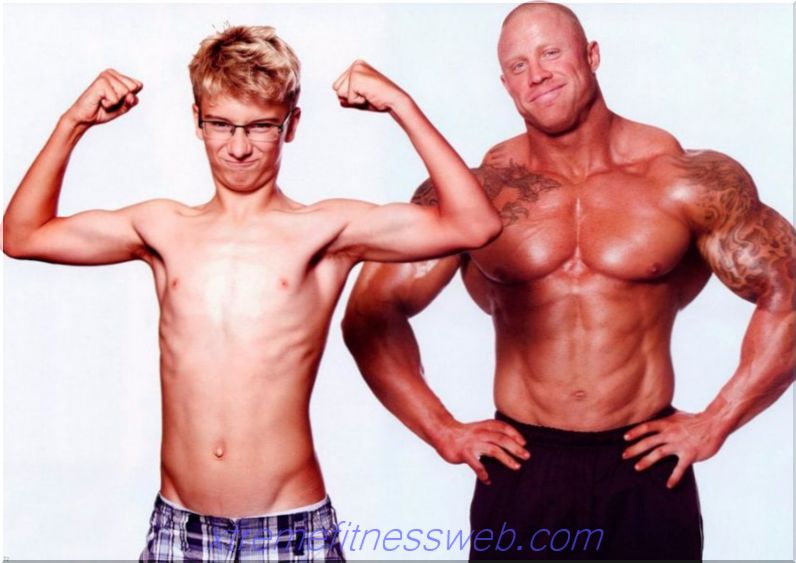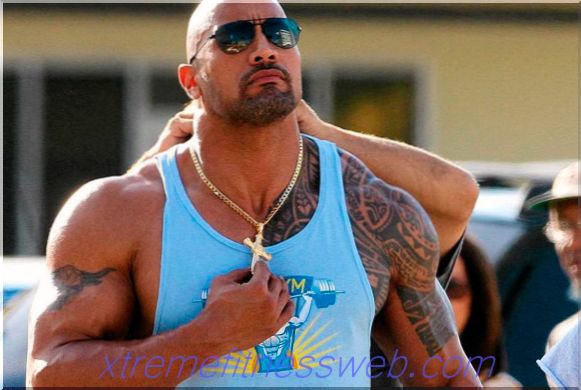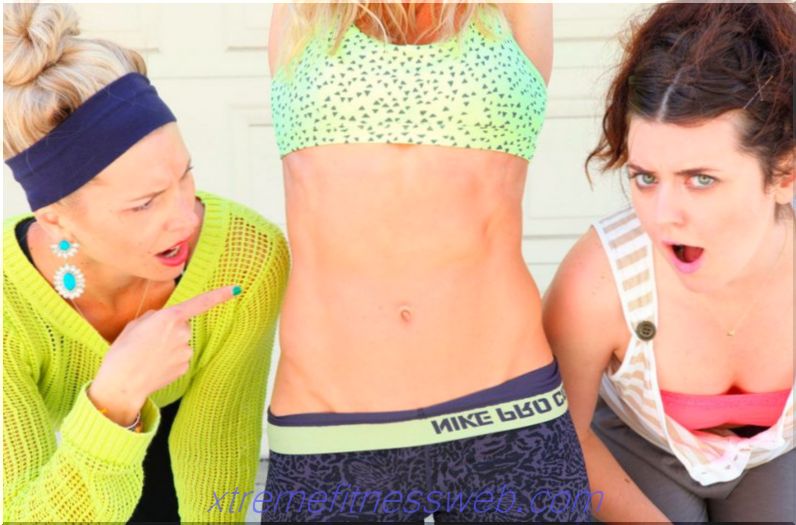- Execution technique
- Recommendations
- Variations
- Parsing exercise
- Exercise Preparation
- Program Inclusion

The name "Australian pull-ups" was given to this exercise by the Americans. It corresponds to the slang name of Australia - "down there." Who invented this beautiful exercise is not known for certain. But it has been used in physical therapy, children's gymnastics, crossfit and fitness training for many years. The movement will help develop the broadest muscles of the back for those who do not yet know how to pull themselves up from the vis, or does it technically wrong - with a buildup.
In the gyms, the exercise is performed by fixing the neck of the Smith machine at a level below the waist of the athlete, or in the power frame, using a regular bar as a support for the support. You can also do the exercise on parallel low bars with a reverse grip or a specialized horizontal bar. The movement is sometimes performed in loops for training, on gymnastic rings or in a hang on a dense rubber shock absorber. This allows you to activate the back muscles in a slightly different way, include stabilizers in the work, and reduce the load on the lower back.
Content
- 1 Technique
- 2 Recommendations
- 3 Variations
- 4 Analysis of exercises
- 4.1 What muscles work
- 4.2 Benefits
- 5 Preparation for exercise
- 5.1 Correct execution
- 5.2 Errors
- 5.3 Performance Tips
- 6 Inclusion in the program
Execution technique

Starting position
- The crossbar is installed at the waist level, or slightly higher if the beginner is pulled, and from a lower position it is difficult for him to make a movement;
- It is necessary to fix the projectile so as to prevent a fall;
- The grip is straight, at a width slightly wider than the shoulders or an adequate width of the shoulders;
- The body is straightened, the pelvis is matched, the hip joint is straightened, the muscles are tightened;
- Fingers clasp the fingerboard, palm rests on the fingerboard;
- The abdomen is tightened and neutralizes excess deflection in the lower back
Traffic
- Bring the shoulder blades to the spine and remove the shoulders from the ears;
- Stretch your chest to the crossbar, continuing to reduce the shoulder blades, and strain the latissimus muscles;
- Touch the crossbar, then lower the housing back;
- Reduce muscles on exhalation, lower on inspiration;
- Do the required number of repetitions, maintaining a straight position of the body, and tightened buttocks
Attention
- A pause at the peak of contraction will help you strengthen the latissimus muscles better, and will relieve unnecessary movements;
- Lowering should be relatively slow, just relaxing your muscles and lowering yourself under the weight of gravity is a bad strategy;
- Jerking up and pushing the pelvis are not allowed;
- It is necessary to turn off the legs as much as possible from the work, not to involve the pelvis, the hip joint and not to push the legs
Recommendations

- Put your socks on the pancake from the bar or the box for plyometrics, this will help to remove the inertia, and eliminate slipping;
- Tighten your chest to the crossbar, in biomechanics, the movement is most similar to an inverted bench press, the exercise will therefore be useful to beginner bench presses, and just those who want to learn how to turn on their back muscles and harvest more;
- Hold statically at the top, this will strengthen the muscles of the body faster. The back is quite strong by nature, it only needs to be included in the work, statics will help the athlete to progress and move faster to more complex exercises;
- Rise smoothly, and try to lower yourself by 4 counts, that is, twice as slow;
- If there are problems with the grip, try to put your hand on the crossbar completely, take a grip deeper, do not work in a manner that involves “extra” muscles in the movement;
- Do not try to exert stronger biceps, working in them is not the main purpose of parallel or horizontal pull-ups;
- Eliminate kick from the ground to progress faster
Variations

- Pull-ups with a narrow reverse grip . This movement involves biceps and forearms more because of its biomechanical nature. Exercise allows you to strengthen the arms and forearms equally with the back, but does not contribute to the long-term progress in the development of back muscles;
- Pull-ups with a narrow, straight grip . Toothed muscles are included in the work, and the shoulders are made to work, but at the same time they work out the widest one better;
- Australian pull-up wide grip . The most common option, which is used only for the development of the widest. This option can be performed both direct and reverse grip, and includes the back most actively. The study of the back muscles will be even more active with a reverse grip, as the athlete's elbows will automatically be pulled to the belt;
- Pulling in training loops . This option is convenient in that those who wish can include in the work the posterior bundles of the deltoid muscles, as well as the latissimus dorsi. Pulling in loops is well suited for those who are just starting to practice, because you can stand close enough to the attachment point of the projectile and reduce the load so that it is optimal for the beginner. It is enough to carry out the movement, pressing the forearms to the body, and you will achieve the maximum inclusion of the latissimus dorsi.
Parsing exercise
What muscles work

In beginner programs, exercise is included as one of the steps in preparing for a classic pull-up. The movement allows you to create an athletic V-shaped torso. Exercise helps to activate not only the muscles of the back, but also the muscles of the forearms and palms, strengthens the grip, prepares to perform all traction movements.
Working muscles:
- The widest and rhomboid muscles of the back;
- Trapezius and round muscles;
- Biceps and muscles of the forearm;
- Press, buttocks, and leg muscles as stabilizers
Benefits
- Suitable for beginners. Often they are the first horizontal draft in terms of strength training, and allow you to learn not only to work with your own weight, but also to properly include the back muscles. The movement is better for a beginner than the pull of the bar to the belt due to the fact that it eliminates even a static load on the thoracic spine and cannot cause a back injury;
- Australian pull-ups are good for rehab. After an injury, this movement will help restore muscle tone, strengthen the back, and improve muscle function in general. Exercise does not contribute to the creation of a twisting or compression load,
- Australian pull-ups allow you to form a beautiful silhouette, suitable for bodybuilding purposes, can be used by continuing athletes to pump back muscles at the end of the workout. The higher the legs, the greater the load on the widest, so the variation with legs raised on the support allows you to get a load even advanced;
- Pull-ups on the low bar are ideal for women's training, they strengthen the "lagging" muscles of most women and relieve posture disorders;
- The movement can be performed by children and adolescents, and does not require a subscription to the hall, in any yard there is a horizontal bar on which you can successfully pull yourself up, and parallel bars or a ladder to hone the skill of Australian pull-ups.
Exercise Preparation

Unlike classic hang, which is not available with limited mobility in the shoulder joint, this exercise option is available to everyone. Before starting a workout, you need to stretch yourself, perform a general cardio warm-up, joint warm-up, and 1-2 sets of pull-ups in a lightweight technique.
For this, beginners can use an almost vertical stance on the ground and a high support, continuing with the usual technique, but without a pause at the top.
Exercise can be included not only as the first movement on the back, but also at the end of the workout, in which case it can be performed after other movements have been done. Then the joint workout is not needed.
It makes sense for beginners to do 1-2 push-ups from the floor at the beginning of a pull-up workout with a parallel grip. The point is that the inclusion of antagonist muscles contributes to the better functioning of the back muscles.
Correct execution

- It is important to keep your spine and legs straight. The knees can not be “pushed” forward, they must remain in a neutral position so that the ligaments do not feel discomfort;
- The height of the crossbar may not be the same for all people. The average starting position is at the waist level, and the majority should move from it. But for beginners, higher crossbars are suitable, and for those who continue and those who are trying to adjust their posture - pulling up literally from a lying position on the floor;
- Technically, it is correctly performed by one who feels the scapula of the shoulder blades to the spine, and reduces them consciously, and not just leads the body with the biceps to the crossbar;
- The starting point of the exercise is characterized by an emphasis on the heels, but if the athlete's hamstrings are uncomfortable, a footstand with extended toes is allowed, or the use of various types of supports;
- The exhalation is performed at the moment of pulling up, the inhalation is performed while the body is slowly lowering down;
- We must strive to ensure that both halves of the back work the same way, the forearms are parallel to each other. This will contribute to the equal involvement of muscles in the work, and will help to move actively.
Mistakes
- Work in terms of amplitude, lack of inclusion in the work of the back muscles due to pushing with legs;
- Bending the legs at the knees, and pushing the pelvis to the bar;
- Uneven movement, that is, traction with one hand and half of the back;
- Divorced shoulder blades at the time of peak contraction;
- Lack of rigid fixation of the feet, "riding with your feet";
- Breath holding during exercise;
- Haste and careless pace
Performance Tips

- Use grip on the notched part of the neck and magnesia, if allowed in the hall. This will help avoid slipping while driving;
- Than the feet are already standing, the more you have to involve the broadest muscles in your work, and pull yourself harder;
- Experienced athletes should strive for parallel hanging on the crossbar, and therefore keep their feet at a decent height
Important: experienced athletes can rely on the calf, and not on the feet. This emphasis reduces the efficiency of the legs and transfers the load to the back, which is required for this exercise.
- Correcting the load is quite simple. The closer the spine to the floor plane, the more effective the work of the latissimus dorsi. Therefore, in the gym, the crossbar for pull-ups or the bar must be set as low as possible;
- In the hall, you can use not only supports for the feet, but also straps to increase the amplitude of movement by removing the load from the forearms and palms. It makes sense to wear a strap when the grip loosens
Nuance: this exercise can be performed in the loops of TRX, and then it will help not only strengthen the muscles of the back and arms, but also learn how to stabilize the body. In this embodiment, the movement also acquires additional meaning as an exercise for the ligaments.
Program Inclusion

The place of exercise in the training program depends on the fitness of the athlete. If the athlete cannot perform 10-12 parallel pull-ups, he is given this exercise in 2-3 approaches for a feasible number of repetitions.
If he is able to perform more than 12 repetitions, you need to gradually move on to more complex movements. First, the feet are raised to support to provide maximum amplitude. Then they gradually switch from parallel pulling up to performing exercises in a classic hanging on a horizontal bar.
The Australian pull-up can remain in the plan for as long as the athlete can do it for only 20-25 reps. As soon as he can do more, weights must be added. A weighted vest is ideal for this purpose, but you can also use a backpack if you practice at home.







